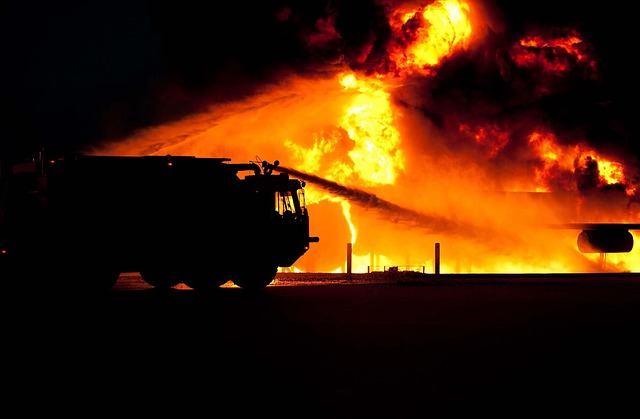For independent drivers, navigating liability insurance involves understanding specific needs to manage costs and secure adequate protection. Key components include bodily injury and property damage liability, with additional options like personal injury protection (PIP) and uninsured/underinsured motorist coverage. Meeting minimal jurisdiction requirements, comparing quotes from multiple insurers, regularly reviewing policies, and leveraging online tools help ensure compliance while minimizing financial risks. By balancing coverage and cost efficiently, independent drivers can stay protected without breaking the bank.
In today’s competitive landscape, understanding liability insurance for independent drivers is paramount. As the gig economy thrives, ensuring compliance with minimal coverage requirements while securing the best rates can be a daunting task. This article guides you through the intricacies of liability insurance for independent drivers, offering insights on what you need to know, strategies to achieve optimal rates, and staying compliant without financial strain.
Understanding Liability Insurance for Independent Drivers

For independent drivers, navigating the landscape of liability insurance can seem like a labyrinthine task. But understanding your coverage needs is crucial for ensuring minimal costs and maximum protection. Liability insurance is designed to safeguard drivers from financial ruin in case of an accident where someone else is injured or their property damaged. As an independent driver, the type of policy you need may vary depending on factors such as the vehicles you operate and the types of clients you serve.
In terms of liability insurance for independent drivers, there are typically two main components: bodily injury liability and property damage liability. Bodily injury liability covers medical expenses and other related costs incurred by individuals injured in an accident caused by the driver. Property damage liability, on the other hand, covers the cost of repairing or replacing property damaged during a collision. Independent drivers should also consider additional coverage options, such as personal injury protection (PIP) and uninsured/underinsured motorist coverage, to further safeguard against unexpected incidents.
Minimal Coverage Requirements: What You Need to Know

Minimal Coverage Requirements: Unraveling the Essentials for Independent Drivers
When it comes to liability insurance, understanding minimal coverage requirements is paramount for independent drivers. These mandates are designed to protect both drivers and passengers while ensuring responsible driving practices. As an independent driver, navigating these requirements is crucial to avoid legal pitfalls and financial burdens.
Liability insurance plays a vital role in safeguarding against potential risks on the road. The specific minimal coverage levels vary by jurisdiction, but typically include bodily injury liability and property damage liability. For instance, many regions mandate a minimum of $100,000 in bodily injury liability per person, with a cap of $300,000 for all injured parties. Additionally, drivers must carry property damage liability coverage equal to or exceeding $50,000 per incident. Ensuring these minimal requirements are met is essential to comply with legal obligations and secure personal financial protection in case of accidents.
Strategies to Secure Best Rates on Liability Insurance

Securing the best rates on liability insurance for independent drivers involves a strategic approach. Firstly, compare quotes from multiple insurers to ensure you’re getting competitive pricing. Independent drivers often have unique needs, so specialized brokers who understand this niche can offer tailored solutions and access to exclusive markets, potentially saving significant costs.
Regularly reviewing and updating your policy is also key. As risks change with time and driving experience, your liability insurance should evolve accordingly. Staying informed about market trends and new coverage options can help you negotiate better rates. Bundling your insurance policies or exploring discounts for safe driving and multiple vehicles can further enhance savings.
Staying Compliant Without Breaking the Bank

Staying compliant with minimal liability insurance requirements for independent drivers doesn’t have to be a financial burden. Many insurers offer tailored policies that balance coverage and cost efficiently. The key lies in understanding your specific needs and risk profile. Independent drivers, especially those just starting out, often face higher premiums due to their lack of driving experience. However, by opting for a policy with adequate but minimal liability coverage—such as the legal minimums required by law—you can keep costs down while still being protected.
Comparing quotes from multiple insurers is crucial. Many factors influence rates, including age, driving history, and the type of vehicle. By shopping around, you may discover that certain companies offer better deals for young or clean driving records. Additionally, leveraging online tools and resources to research insurance companies and their offerings can help identify providers who cater to cost-conscious independent drivers looking for adequate liability insurance without unnecessary extras.
Independent drivers can navigate the complex landscape of liability insurance by understanding their minimal coverage requirements and employing strategies to secure competitive rates. By staying informed about policy options and making wise choices, drivers can ensure compliance without compromising their financial stability. Remember, the right liability insurance is a crucial component of protecting yourself and your assets while on the road.
